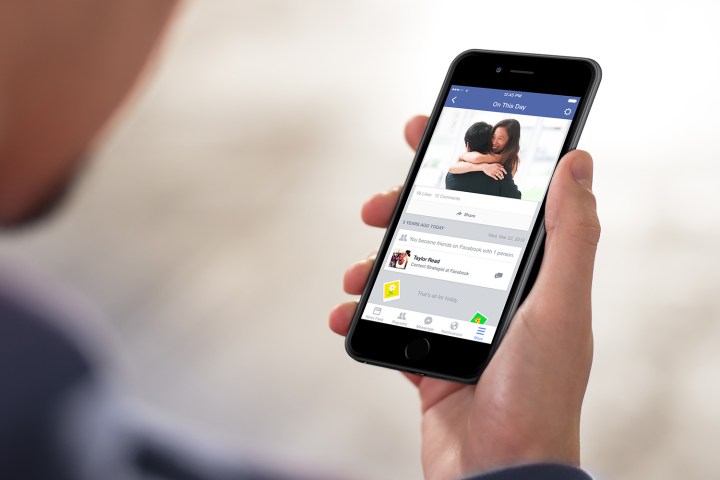
Introduced a year ago today, ‘On This Day’ shows users older posts, including photos, status updates, and wall posts from a selected date. Like Twitter’s #myfirsttweet tool, its appeal lies in its ability to transport you back to a particular time and place, through your archive of social interactions.
Accused of being a Timehop clone upon its release, the feature has since overshadowed that app, mainly due to the enormous built-in audience Facebook has. ‘On This Day’ now boasts 60 million daily active users, and 155 million subscribers — the latter receive notifications in regards to their past activity.
For its part, Facebook has refined the feature, transforming it into a treasure trove of happy memories.
We previously reported on the social network’s efforts at improving ‘On This Day’ by tinkering with its algorithm to allow you to block out posts deemed as negative or sad. That way users wouldn’t be confronted by images of, say, their ex, or deceased loved ones, not to mention the barrage of regrettable posts everyone is guilty of sharing.
Facebook has since taken that approach one step further, reports TechCrunch. The platform is now using AI to rank the posts you see in ‘On This Day,’ and is customizing the feature based on your past use and demographic.
Facebook applied a similar methodology to its ‘Year in Review’ feature, filtering out photos where memorialized accounts or former partners are tagged, or photos of people you’ve blocked.
The controversial introduction of ‘On This Day’ wasn’t the only time the social network has been accused of plagiarism. Facebook’s attempts at failing to create a Snapchat competitor are well documented, although that hasn’t stopped the company from continuing to try. Most recently, its hidden basketball game within Messenger drew comparisons to Peach, a playful social media app that caused a lot of buzz upon its launch last year, but has shown little staying power.
Editors' Recommendations
- Facebook’s massive outage saw millions sign up for rival apps
- Facebook’s Zuckerberg had a ‘constructive’ meeting with President Trump


